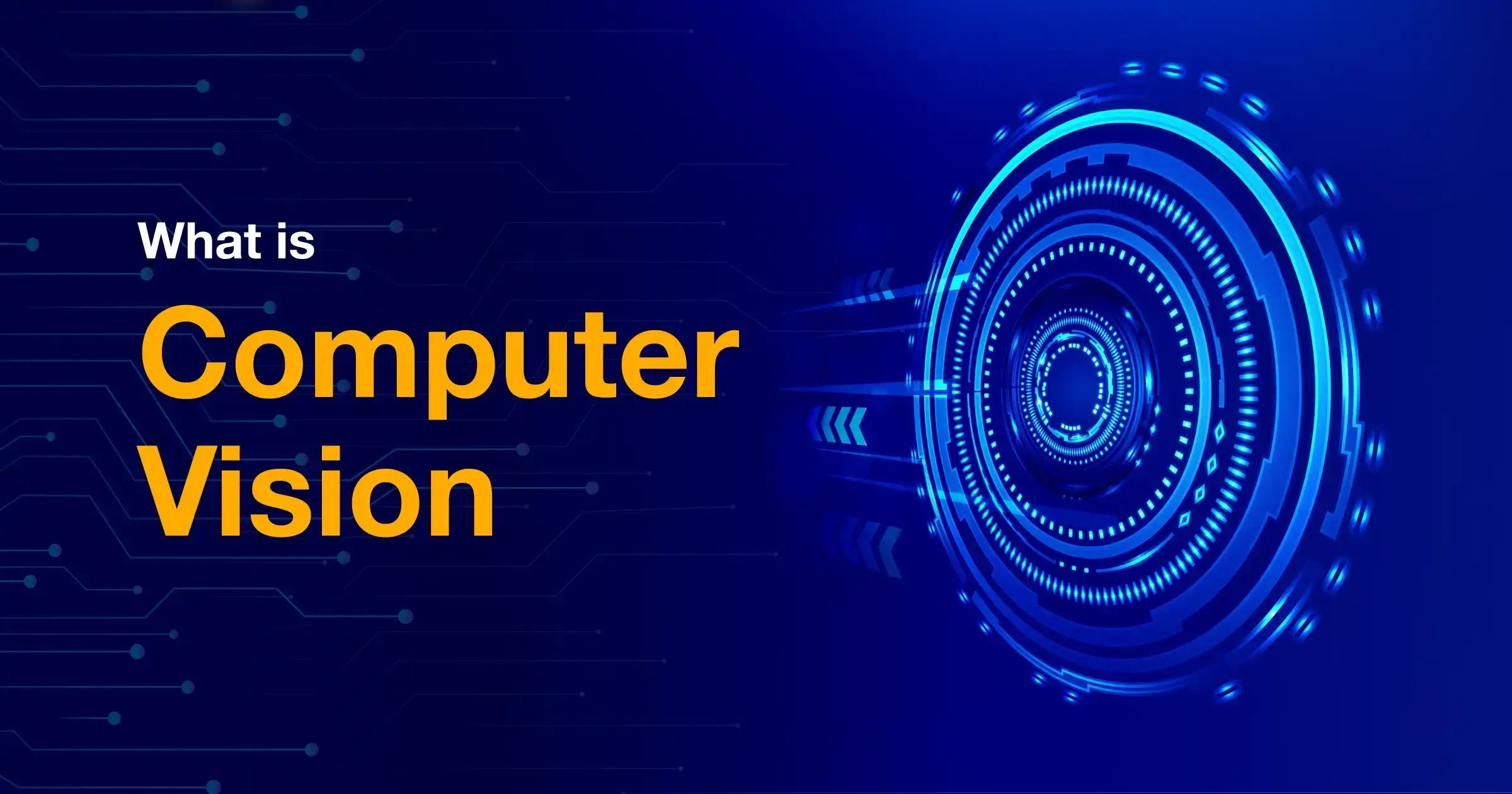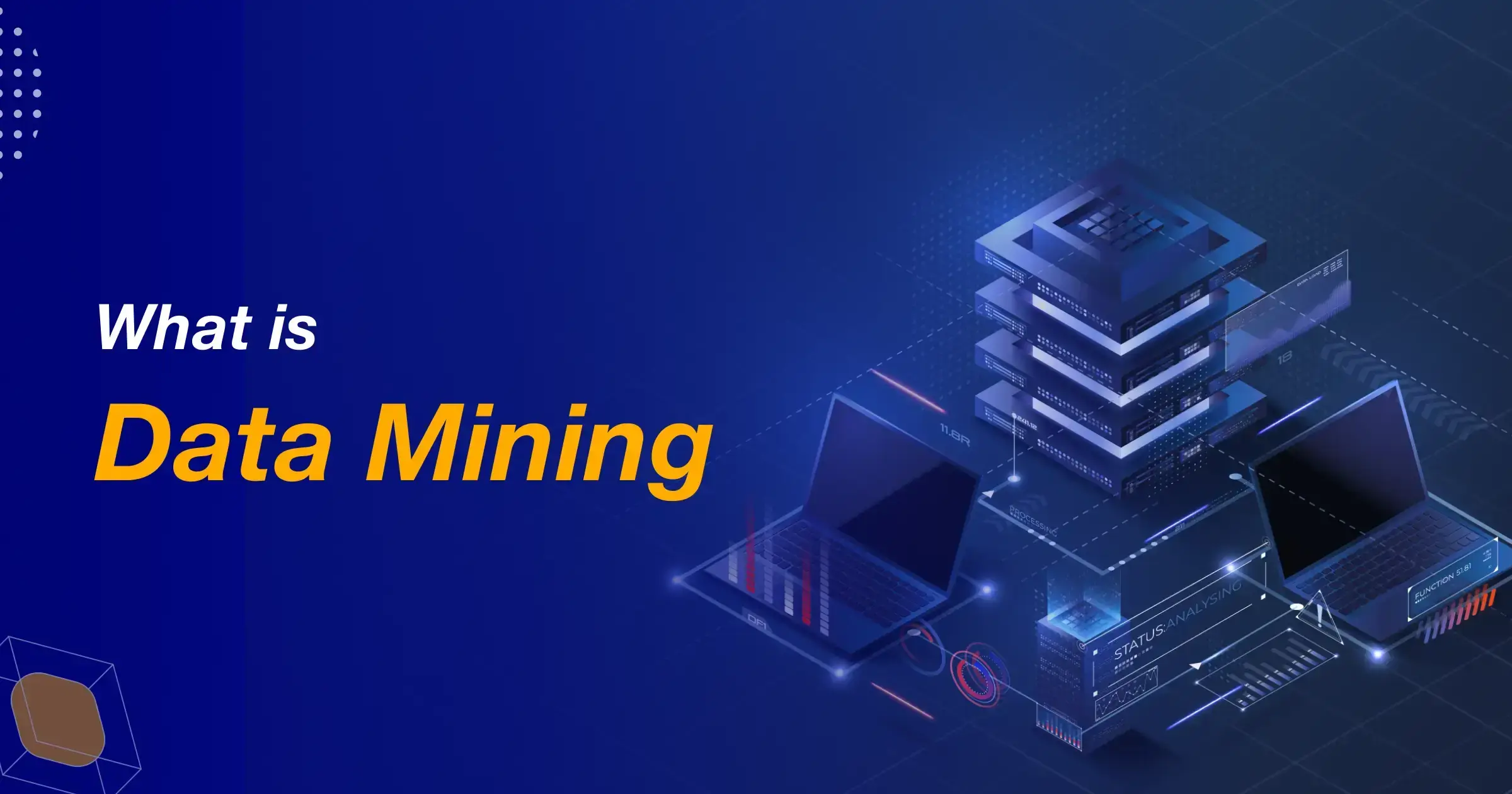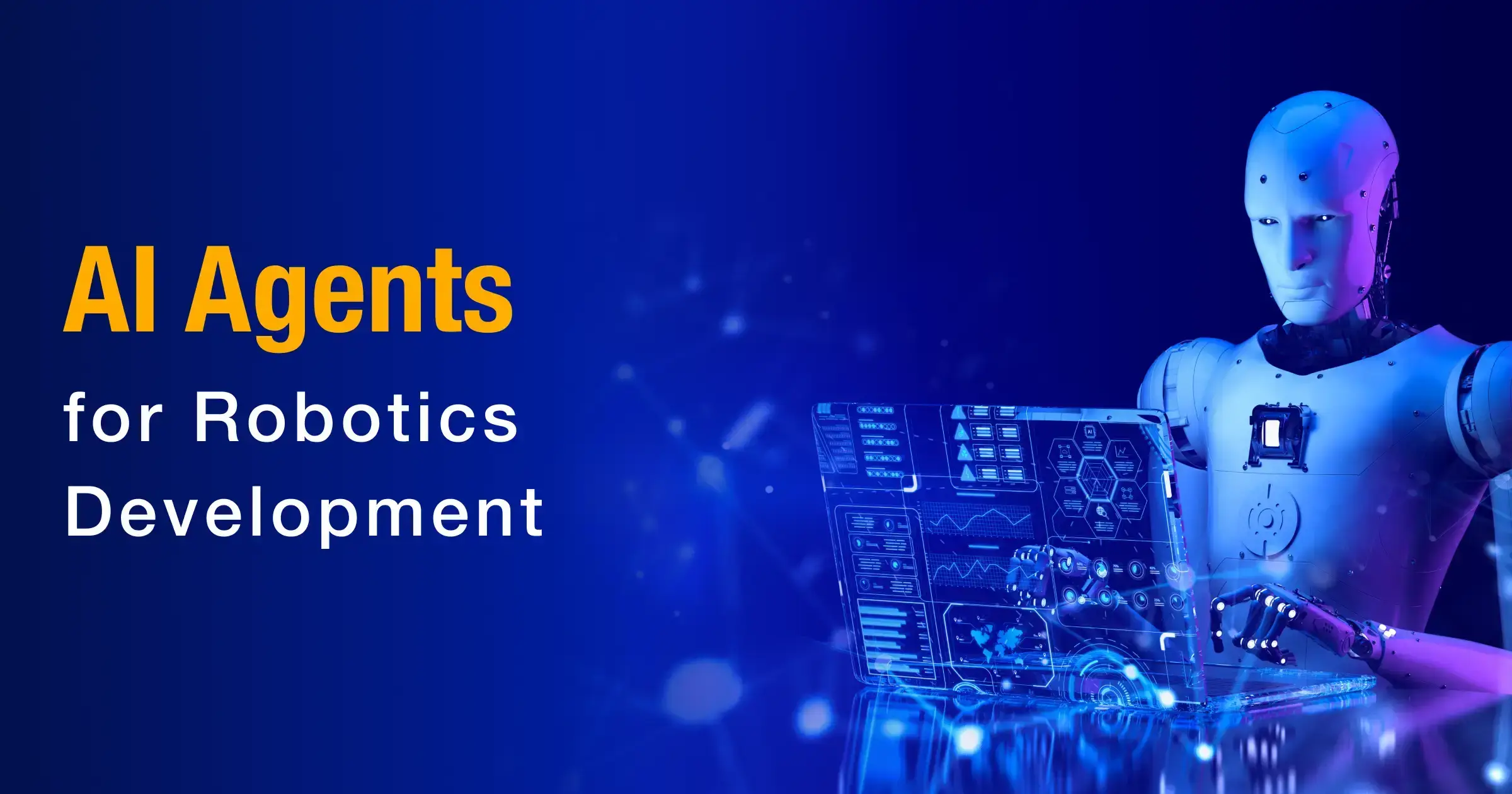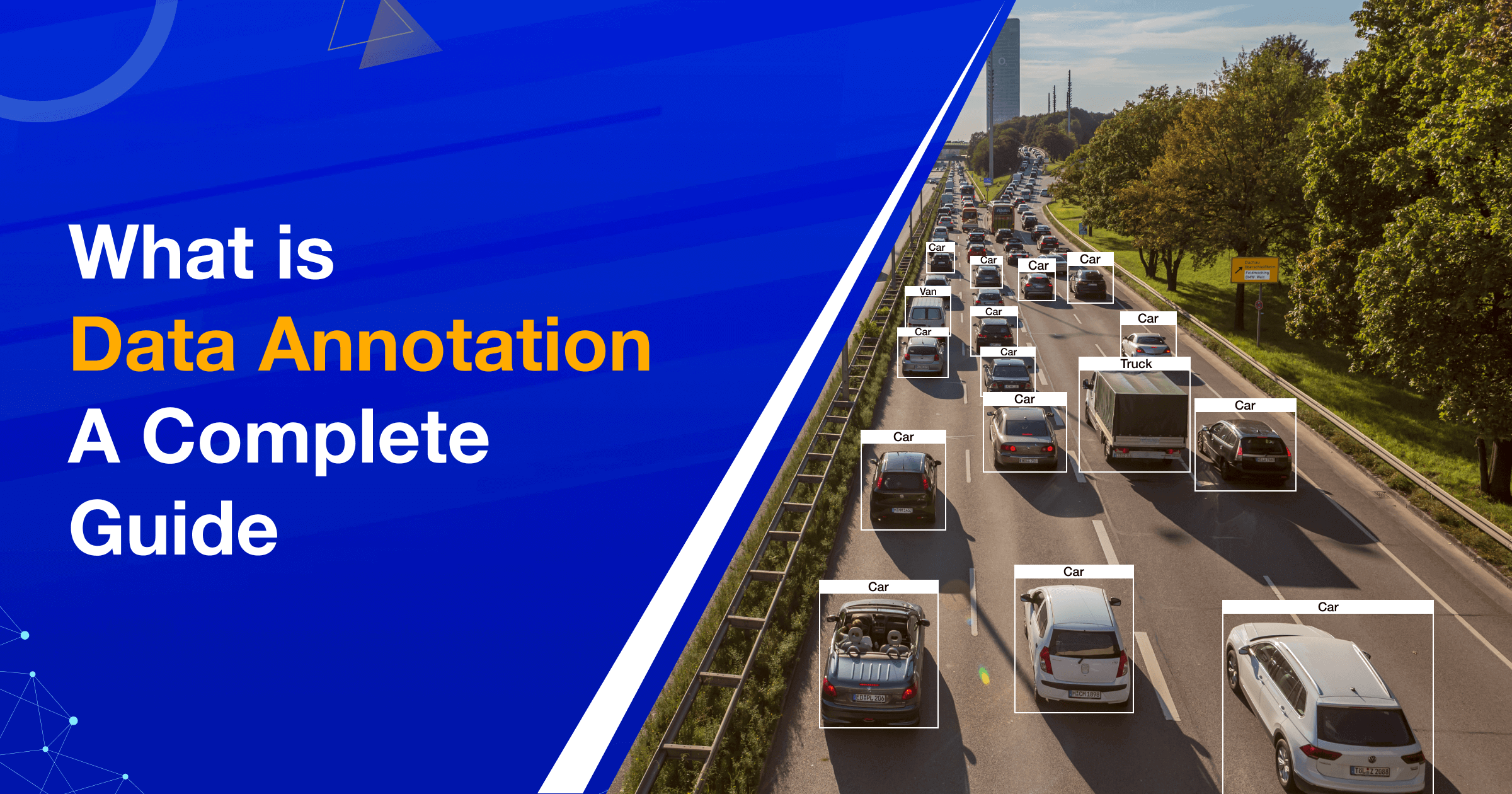
Computer vision is a subset of artificial intelligence that helps machines understand and comprehend visual data like images and videos. It essentially uses machine learning, deep learning, and neural networks to pull meaningful information from visual datasets.
In simple terms, computer vision essentially helps machines virtually "see" the world around them. It gives computers the ability to process visual data like images or video, understand what’s in them, and then make data-driven decisions based on that.
Think of it like this: when you look at a photo of a dog, you instantly know it’s a dog. You do not need to think hard about it. Computer vision tries to give a similar ability to machines as it allows them to look at an image and recognize what it is or what’s in it.
This could be as simple as recognizing a face in a selfie. Or it could be something much more advanced like helping a car detect people crossing the street, which is an essential thing in self-driving cars.
This visual technology is one aspect of artificial intelligence, which is a broad category encompassing various other technologies. Like how natural language processing (NLP) facilitates machines to understand human language, computer vision focuses on visual understanding and primarily deals with images, videos, and other visual inputs.
So, while other AI systems might read a sentence or analyze a spreadsheet, computer vision systems are built to work with pixels and patterns in pictures.
For example, a voice assistant that uses facial recognition is using both computer vision and natural language processing. They work together to create smarter tools.
Key Takeaways
- Computer vision works by teaching machines to understand visual data the way our brain does. It finds patterns in pixels and builds up to context and meaning.
- The evolution of computer vision moved from hand-coded rules to data-driven deep learning. This shift unlocked more complex, scalable solutions.
- CNNs power most modern vision systems. They use filters to detect edges, textures, and shapes, layer by layer, forming a complete understanding of data.
- Image classification assigns a label to the entire picture. It’s great for simple tasks like “cat vs dog,” but can’t say where the object is.
- Object detection goes further. It draws boxes around objects and labels them.
- Semantic segmentation breaks the image into regions by labeling each pixel. It’s precise and used in tasks like autonomous driving or medical scans.
- Instance segmentation separates objects of the same type. Instead of just labeling pixels as “person,” it marks each individual person in the image.
- Feature extraction turns raw images into numbers machines can use. It finds patterns like edges or color blobs and passes them to deeper layers or classifiers.
- Transfer learning saves time and compute. Instead of training from scratch, you start and fine-tune it for your task.
- Real-world applications go beyond theory. It has immense applications for critical industries like healthcare and agriculture.
How Computer Vision is Different from Human Vision

There is a stark difference between how humans perceive visual data and how machines do. Humans use their eyes and brains to make sense of the world. We can even say that we are great at spotting things, recognizing faces, and noticing changes without much effort.
On the other hand, computers work in an entirely different way. They typically look at pixels, tiny dots of color, and then analyze them through numbers and patterns. They don’t “see” like we do. In other words, they don’t picturize things. Instead, they use algorithms to understand what those pixels represent.
What’s impressive is that with the right data and training, a machine can sometimes spot patterns even humans might miss. For example, in medical imaging, AI might find early signs of a disease that even trained doctors could overlook.
The Role of Machine Learning and Neural Networks in Computer Vision

At the heart of modern computer vision lies machine learning, which is how computers learn to improve over time.
Instead of being told what a cat looks like, a computer is shown thousands of images of cats, thanks to data annotation, computers can understand each data.
It then learns what patterns are common in those pictures, which could be like fur, ears, or eyes, and builds its own way of recognizing them.
Neural networks, especially convolutional neural networks (CNNs), the specialized machine learning algorithm types, are the main tools used here. They are designed to work well with images. These networks effortlessly scan images, that too layer by layer, and pick up more detail each time.
This process lets the system learn things like shapes, textures, and the complexities of visual data. Over time, the model gets better at spotting things on its own.
Face unlocks on phones and detecting defects on a product line are some examples of a vast number of applications that this technology has unlocked.
How Computer Vision Works

Computer vision typically works by turning visual data into numerical data for its understanding. It then extracts patterns like shapes or textures, colors, and other visual elements using deep learning models, especially convolutional neural networks, to understand the image. It essentially learns the context, depth, and spatial relationships of visual inputs to make real-time decisions.
Here are the detailed steps involved:
- Image Acquisition
- Preprocessing and Transformation
- Feature Extraction
- Model Inference and Decision-Making
1. Image Acquisition
Like in any other AI system, data plays a crucial role in computer vision. But, here, all that matters is visual data like images or videos.
As the machine just needs a visual input, the source of the data does not matter here. That input becomes raw data for the system to work with.
2. Preprocessing and Transformation
Once the visual data is captured, it needs a bit of cleanup. This step prepares the data for deeper analysis of algorithms.
Sometimes, the image is blurry or too dark. Other times, it has background noise and other disturbances. In this stage, the system adjusts brightness, sharpens edges, or filters out irrelevant details with an ultimate aim of enhancing the data quality for machines to understand and train well.
It also resizes the image, so it fits the model’s requirements. If the image is too big, it takes too long to process. On the other hand, if it’s too small, the details may get lost. So, the system makes it just right.
3. Feature Extraction
Now the main process kicks in as the machine starts to look for patterns. These patterns are called “features.”
Features could be anything, which includes edges, textures, colors, or shapes. For example, in a photo of a dog, the system might notice the outline of the ears, the eyes, or the nose.
The goal in this step is to find the parts of the image that help it understand what it’s looking at. These features are like clues and they ultimately guide the system to make sense of the visual data.
4. Model Inference and Decision-Making
This is a crucial step where machines understand visual data, process it, and find patterns and correlations, based on which the decisions are made.
It takes all those features and runs them through a trained model. That model has seen thousands, maybe millions of visual data, say images, before. It compares the new image to what it has already learned.
Then, it gives a result. Maybe it says, “This is a dog.” Or “There’s a car in this image.” Or “That person looks happy.”
In some cases, the model might do more than just label things. It might draw a box around an object. Or track a person moving in a video. It depends on what the system is built for.
Traditional vs Deep Learning Pipelines
Traditional systems highly relied on rule-based methods to identify patterns within visual data. Engineers would hand-code features containing specific instructions for systems to carry out. For example, they would tell the system to look for specific edges or corners.
These systems worked well but they were not very flexible. As complexities increased with data, they struggled with new types of visual data and spotting patterns within them.
Then deep learning came along. It highly replaced a bulk of what professionals traditionally followed for processing visual data.
Now, instead of hand-coding features, the system learns them on its own. Deep learning models are great at doing this as they learn patterns from data. The more images they see, the smarter they get.
So today, most computer vision systems rely on deep learning rather than traditional methods. It makes them faster, more accurate, and much better at understanding complex images.
The Role of Labeled Datasets and Annotations

To train these smart systems, we need labeled data. That means images with clear tags or descriptions. This is where data labeling for machine learning and the meticulous process of data annotation come in.
If you want the system to recognize cats, you feed it lots of cat photos. Each one must be labeled: “This is a cat.” Over time, the model learns what a cat looks like.
Sometimes the labeling goes deeper, like for object detection, labels include the exact position of the object inside the image. And, for facial recognition, it could possibly include the meaning of emotions or identity.
This process is called data annotation. It essentially labels data like telling machines what each data means. The more accurate the labels, the better the system learns.
Without labeled data, the system can’t learn much. That’s why good datasets are very important for every successful computer vision project.
Core Capabilities of Computer Vision
Computer vision performs a plethora of tasks and helps machines “visualize” data like images, videos, and other visual inputs. Here are some of its core capabilities.
Object Classification


One of the most basic skills that computer vision systems learn is to classify objects. It means the system looks at a visual data, let’s say an image, and decides what are its components. It makes this prediction based on patterns it has learned. If you show it a photo of a cat, and it labels it “cat,” that’s object classification in action.
- Focuses on predicting a single label for the entire image
- Trained using large labeled datasets like ImageNet
- Often the first step before moving to more complex tasks
Object Detection and Recognition

Object detection pretty much sounds like object classification, but it goes deeper than that. It finds where objects are in an image and draws a box around them. To make it a step further, object recognition deals with identifying exactly what those objects are. In simpler terms, object recognition exactly finds an object within a visual data. For example, spotting “a person” in a crowd is detection, whereas knowing the particular person who goes by the name “John” is recognition. However, it needs intensive training to function better.
- Finds multiple objects and their exact positions
- Recognition adds an identity or category to each detection
- Key in autonomous driving, retail analytics, and smart security
Object Tracking

Object tracking is a detailed process of following an object across multiple frames of a video. It doesn’t just detect something once. Instead, it watches how that object moves over time. This is what mainly powers motion tracking in sports broadcasts or real-time surveillance.
- Works with both single and multiple objects
- Maintains identity over time across video frames
- Used in sports analytics, drones, and behavioral monitoring
Optical Character Recognition (OCR)
Optical Character Recognition (OCR) helps machines read text from images. It can pull words from scanned papers, street signs, or even receipts. This makes data entry faster and helps automate document processing using AI.
- Converts printed or handwritten text into digital form
- Supports multiple languages and fonts
- Commonly used in banking, ID verification, and logistics
Image and Video Segmentation
Image segmentation means dividing an image into distinct parts that make sense. Here, the system labels each pixel in the data. In a specific visual data, some pixels might belong to a dog while others to a couch. Video segmentation is also like this, where segmentation is done for every frame.
- Semantic segmentation labels by type (e.g. all dogs)
- Instance segmentation separates each object (e.g. dog 1, dog 2)
- Widely used in medical scans, AR filters, and quality inspection
3D Object Recognition and Depth Perception
3D Object Recognition goes beyond flat, two-dimensional images. Here, the system starts to understand shape, size, and distance as it grasps all three co-ordinates. It then builds a 3D sense of space from 2D images. This is precisely how robots know how far to reach or how self-driving cars judge gaps between vehicles.
- Calculates depth and distance using stereo vision or sensors
- Recognizes shapes from different angles or partial views
- Helps with navigation, obstacle avoidance, and 3D modeling
Scene Understanding and Context Awareness
One of the challenging tasks in computer vision is making machines understand the context of visual data. It is all about getting the big picture – instead of just spotting objects, the system figures out what’s happening in a visual data. Is it a crowded street? A classroom? It combines detection, segmentation, and layout to get this context.
- Interprets relationships between people, objects, and space
- Helps systems make smarter decisions based on surroundings
- Essential in robotics, smart assistants, and public safety
Image / Video Generation
If you list AI technologies that have received widespread popularity, image generation surely tops the list. This capability flips the script. Instead of analyzing images, the system creates an entirely new one or improves an existing one. It can generate new visuals or make blurry photos clear again. This is where generative AI, like GANs, comes in. With recent developments, generative AI is now producing stunning quality video outputs using prompts.
- Produces high-quality images from low-resolution inputs
- Removes noise or fills in missing parts of images
- Used in deepfake creation, design tools, and visual effects
Applications of Computer Vision Across industries
Computer vision has a wide array of applications across multiple industries. Here is a glimpse of how this technology plays a pivotal role in key industries.
Healthcare
When it comes to healthcare technology, computer vision fundamentally transforms how doctors read medical images. It helps spot tumors in MRI scans faster than the human eye. It powers AI tools that read X-rays, CTs, and pathology slides with clinical-grade accuracy.
In surgeries, computer vision systems assist robotic arms with utmost precision by identifying nerves and organs and tracking movements in real time. This cuts down errors and increases accuracy inside the operating room.
Automotive
In the auto industry, computer vision is the critical technology that drives various automotive software, including self-driving systems. With its exceptional abilities to interpret visual data, computer vision helps vehicles detect lane markings, read traffic signs, measure distance between vehicles at the front, rear, and sides, track pedestrians, and many more.
Computer vision also makes real-time decision-making possible. Not only self-driving systems, but it also powers driver monitoring systems that track eye movements or head tilt to prevent drowsiness-related accidents.
Retail
Retailers use computer vision to manage shelves and study how people shop. By installing smart cameras, you can track things like which products are running fast and require a refill and alert staff in real time.
Computer vision equips retail with advanced technology by helping to study shopper behavior like where people pause, what they pick up, and how long they stay at a particular section, etc. Computer vision also helps self-checkout counters where it helps identify items and prevent theft, even without scanning a barcode.
Agriculture
Computer vision helps agriculture on multiple levels. For instance, farmers use drones and smart cameras to monitor crops at scale. Computer vision helps detect crop disease early by spotting changes in leaf color or shape at high accuracy.
It also supports precision spraying as it targets only the affected areas, thus saving considerable money and resources. If you look at it on a larger scale, computer vision systems analyze yield potential and soil quality, which help farmers make data-backed decisions across huge fields.
Manufacturing
On production lines, computer vision spots defects faster than manual inspection. It checks for missing parts, even tiny scratches, or misaligned components in milliseconds, all without any human overseeing.
AI equipments like robotic arms use computer vision to guide themselves at every step, thus making sure they pick and place items with perfect accuracy, ultimately replacing humans employed in dangerous activities. This drives speed, quality, and safety in automated factories.
Computer Vision Use Cases
Let us look at some critical use cases of computer vision technology.
Fraud Detection in Finance
- Banks use vision models to spot forged signatures by analyzing stroke pressure and writing patterns.
- High-res scans of IDs are checked for microprint tampering, font mismatches, and background inconsistencies.
- KYC systems now use face-match verification from selfies to prevent identity spoofing using masks or photos.
Sports Analytics
- Player tracking models analyze speed, direction, and formation in real time from multiple camera angles.
- Instant replay systems use vision to auto-select key highlights by detecting sudden motion shifts or crowd reactions.
- Coaches use pose estimation models to break down player movements for injury prevention and performance boosts.
AR/VR Applications
- Hand and finger gestures are tracked frame by frame to control interfaces in VR environments.
- Depth-sensing vision lets AR overlays interact naturally with real-world surfaces and objects.
- Vision maps your surroundings in real time so digital elements in AR can stick, move, or adjust like they belong there.
Smart Cities
- Cameras monitor traffic flow and trigger dynamic signal changes to reduce congestion in real time.
- Vision models read license plates even in motion or low light for tolling, surveillance, and parking automation.
- Crowd analytics systems monitor public spaces for density, movement patterns, and unusual group behavior.
To Sum Up
There is a real shift in how machines understand and perceive visual data with computer vision. What used to need constant human input like spotting fine-grain defects or interpreting scenes with context is now being done by models that get better over time.
As edge devices are getting more and more powerful and multimodal models kick in, the prominence of computer vision systems is improving as they move from reactive tools to proactive decision-makers. It is known for its accuracy, but the value won’t just come from that.
Its speed, context, and the ability to instantly trigger complex workflows are the ones that are valued on par with accuracy.














